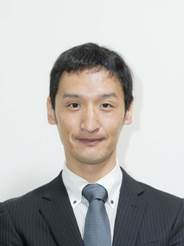报告题目: Microgravity combustion of droplets, gaseous mixtures and solid materials: ignition and steady burning behavior
报告人: Prof. Shinji Nakaya
报告人单位:Department of Aeronautics and Astronautics, The University of Tokyo
报告时间:May 24 ( Thursday) 3:00pm-5:00pm
报告地点:B-518, Lee Shau Kee Building of Science and Technology
邀请人:Prof. Zhuyin Ren
Abstract:
Microgravity combustion research has been conducted using a laboratory-scale drop tower and an airplane in a parabolic arc, at the combustion laboratory of the department of Aeronautics and astronautics, the University of Tokyo. Fuel droplet combustion studies have been conducted to investigate fundamental phenomena of fuel spray combustion, the d-squared law have been applied to analyze droplet burning rates under assumptions of the quasi-steady theory. Although results of the quasi-steady analyses help to understand the characteristics of the droplet combustion, actual droplet combustion behaviors deviated from the quasi-steady ones even under microgravity conditions. On the other hand, droplet burnings in normal gravity sometimes show quasi-steady burning behaviors. Histories of the instantaneous burning rate clarify influencing parameters on the droplet combustions. The effects of the ambient dilution gas as with carbon dioxide and argon on the burning rate are explained for ethanol, n-heptane and n-decane fuel droplets. Also, the bio-fuel droplet combustion has been tested simultaneously with a spray combustion experiments of jet fuels using a double swirl burner. The droplet combustion for aged fuel is tested, which indicates unsteady droplet burning behavior.
Fundamentally, the burning rate of the droplet in microgravity is lower than that of normal gravity, indicating that steady burning of non-premixed flame prefers normal gravity condition. On the other hand, the ignition phenomena of gas, liquid and solid fuels prefers microgravity conditions. Identifying the ignition limit in microgravity is necessary in terms of fire safety. To access the effects of the gravity on the ignition limit, ignition experiments have been performed for pyrolysis gas of PMMA and a wire insulator under radiation heating condition. Ignition tests were performed in a parabolic arc and a laboratory-scale drop tower. The results indicated that the minimum ignition energy and the minimum heat flux were lower in microgravity than in the normal gravity.
Combustion and ignition phenomena are explained based on the experimental results, focusing on the difference between microgravity and normal gravity in this seminar.
Bio:

Professor Nayaka received his Ph.D. from the Department of Aeronautics and Astronautics, The University of Tokyo, where he also completed his bachelor and master degrees. He was recruited as a Research Assistant in the 21st Century COE Program, Japan Society for the Promotion of Sciences, prior to his Assistant Professor position in Osaka Perfecture University. He is currently an Associate Professor at The University of Tokyo. His research interests or projects include laser induced, electrical, microwave plasma assisted spark ignition and non-thermal plasma ignition projects, Supersonic combustion researches, Pre-cooled Turbojet engine project with EU (HIKARI), Ethanol RBCC Engine project, Microgravity droplet combustion project, Innovative thermometry project. Project of spray combustion of jet engine combustor.